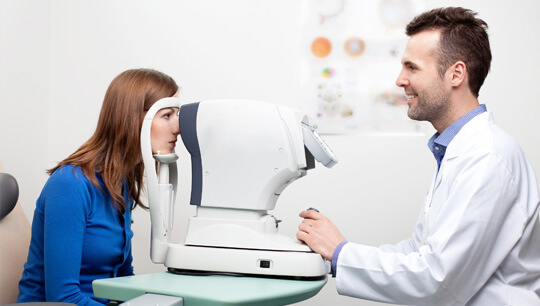It is likely that you have heard the word cataract before in a conversation about vision or eyesight. But not all of us know exactly what a cataract is, its related symptoms or what to do when the presence of a cataract is evident. Contrary to popular belief, cataracts do not just affect us when we grow older. Some cataracts can be present at birth, occur after a traumatic eye injury or emerge with the onset of destabilizing diseases such as diabetes. Regardless, it is important to know what a cataract is so that you can take the appropriate steps to address the problem before it develops beyond professional help.
What exactly is a cataract?
By definition, a cataract is a clouding of the eye’s natural lens. This lens rests behind the iris and pupil and acts very much like a camera lens by focusing light directly onto the retina at the far back of the eye. This allows us to see things just as clearly from points both close and far away. The lens itself is a combination of mostly water and protein that is arranged in a highly specialized pattern that allows for light to pass through. However, as we get older, imperfections in that controlled structure can begin to “clump” together, creating blurred vision and what we now refer to as a cataract.
What are the symptoms or signs of cataracts?
When you begin to develop a cataract, it may not be immediately apparent. It could seem like a small speck or “floater” in your line of vision that eventually causes minor blurred vision. If you begin to experience any of the following symptoms, then it is time to make an appointment with your local eye doctor:
- Chronic blurred vision that is not fixed when wearing corrective glasses
- Seeing double or ghost images
- Experiencing glare from sunlight, artificial light
- Colors that were normally bright are now faded and dull
What causes cataracts?
Although there is no definitive reason why cataracts form over time, researchers do concur that there are certain factors that can greatly contribute to their formation. Prolonged exposure to ultraviolet light is one major cause for cataract development. Frequent exposure to cigarette smoke and air pollution are also documented causes. Heavy drinking has also been known to lead to cataract development. Exposure to certain kinds of radiation can be a problem, especially for pilots and astronauts who spend ample time at high altitudes. Other studies have shown that people with diabetes run a greater risk of developing cataracts than those without it, but further research is needed to determine precise statistics.
What can I do to prevent cataract formation?
Although there are some factors you cannot control, research has shown that diets rich in beta-carotene (vitamin A), vitamin C and vitamin E may help reduce the risk of cataract development whereas high salt diets may increase the risk. However, it is important to make an appointment with your local optometrist if you are experiencing any of the before-mentioned symptoms. Surgical options are available but are much more successful if performed sooner rather than later.




